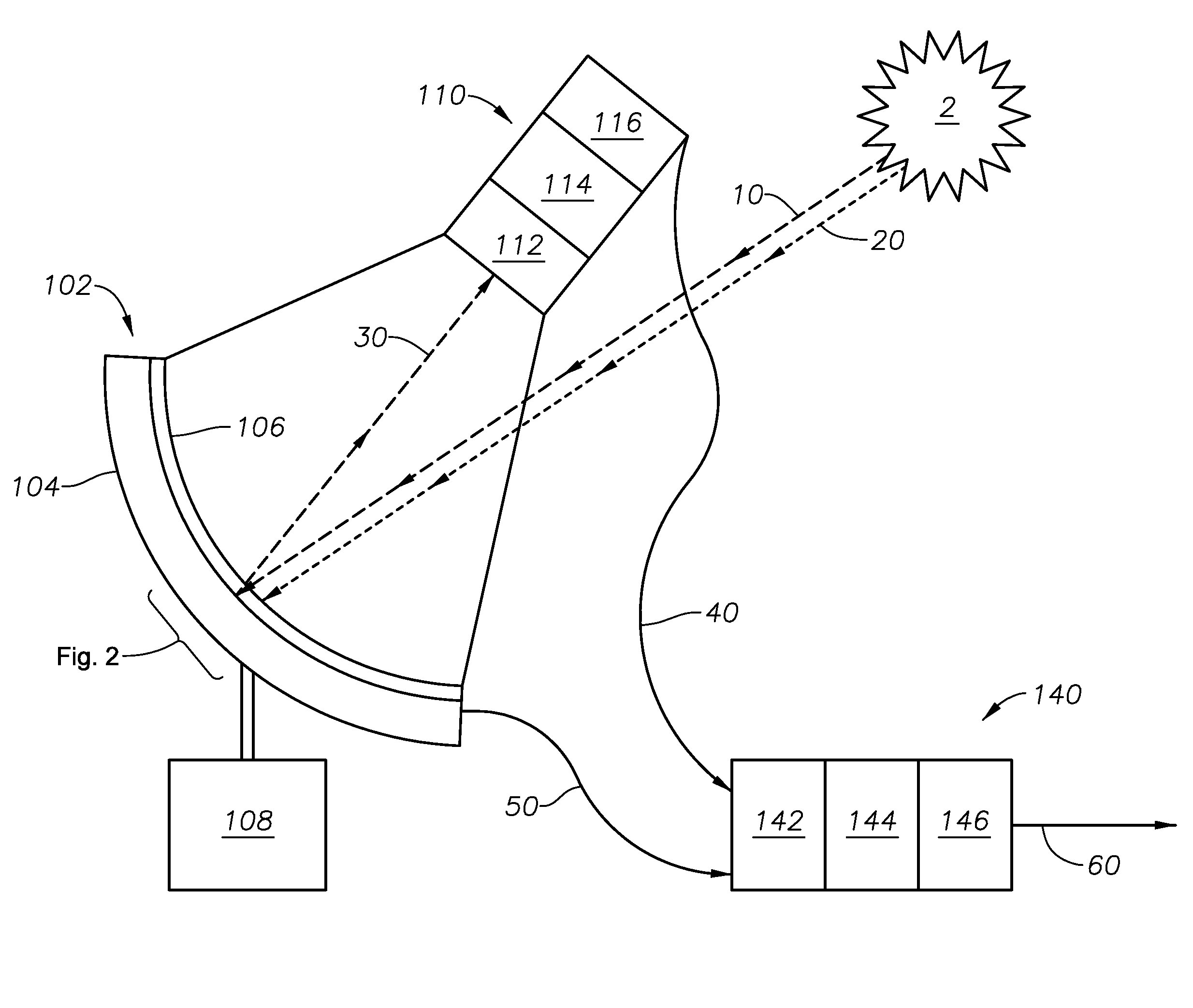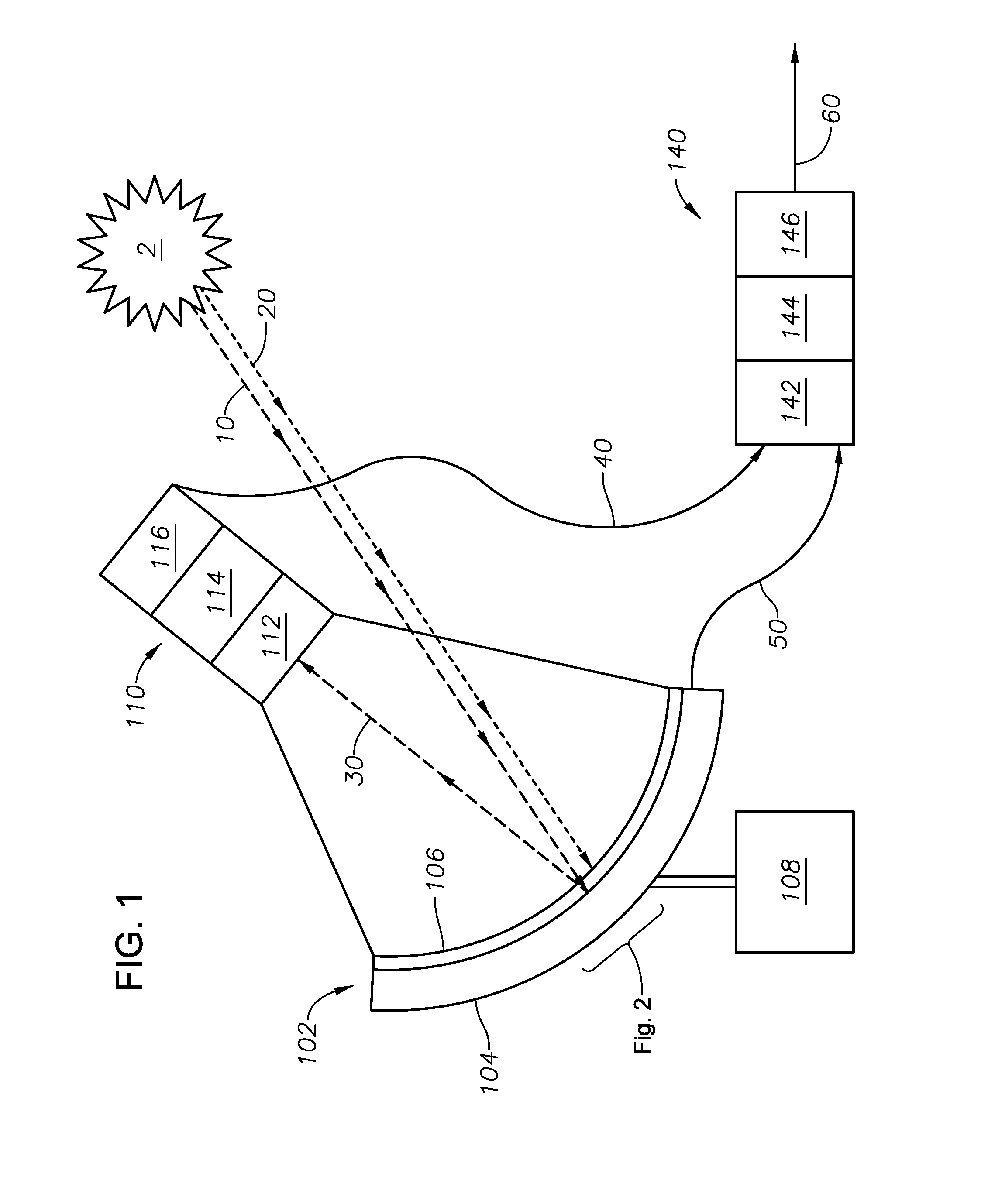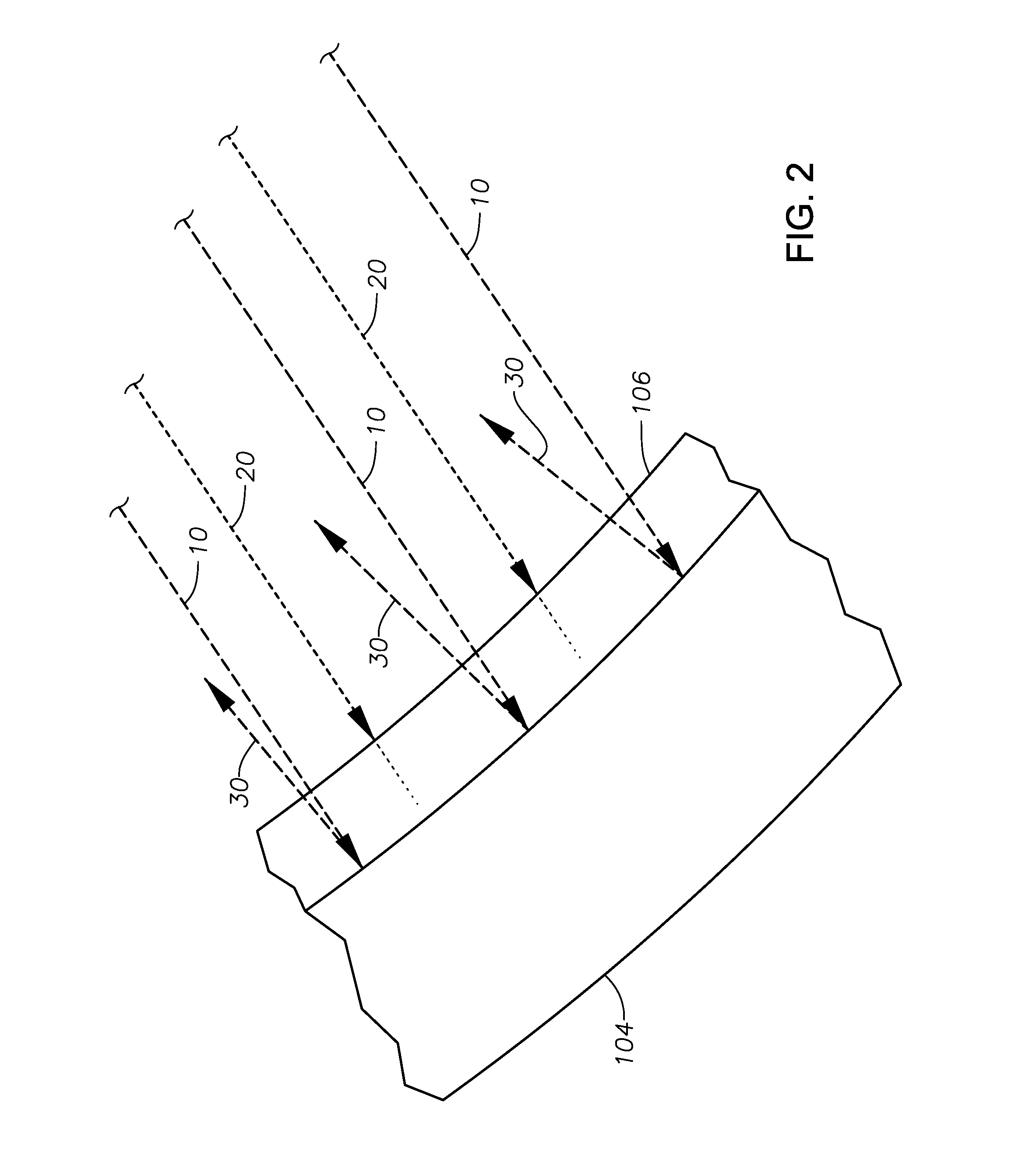High efficiency solar power generator for offshore applications
a solar power generator and high-efficiency technology, applied in solar heat collectors for particular environments, photovoltaics, solar-ray concentration, etc., can solve the problems of expensive power supply to remote locations such as offshore platforms, costly transmission of electricity from land to offshore platforms, and difficult repairs
- Summary
- Abstract
- Description
- Claims
- Application Information
AI Technical Summary
Benefits of technology
Problems solved by technology
Method used
Image
Examples
Embodiment Construction
[0015]While the invention will be described with several embodiments, it is understood that one of ordinary skill in the relevant art will appreciate that many examples, variations and alterations to the apparatus and methods described herein are within the scope and spirit of the invention. Accordingly, the exemplary embodiments of the invention described herein are set forth without any loss of generality, and without imposing limitations, on the claimed invention.
[0016]FIG. 1 provides a schematic of an embodiment of the present invention. Dual-type solar power generator 100 includes dual capture panel 102. Dual capture panel 102 is designed to reflect reflecting wavelengths of solar radiation and to absorb absorbent wavelengths of solar radiation from solar radiation source 2. In a preferred embodiment, dual capture panel 102 has a parabolic shape. In an alternate embodiment, dual capture panel 102 includes one or more flat panels (not shown) arranged in a parabolic shape. Dual c...
PUM
 Login to View More
Login to View More Abstract
Description
Claims
Application Information
 Login to View More
Login to View More - R&D
- Intellectual Property
- Life Sciences
- Materials
- Tech Scout
- Unparalleled Data Quality
- Higher Quality Content
- 60% Fewer Hallucinations
Browse by: Latest US Patents, China's latest patents, Technical Efficacy Thesaurus, Application Domain, Technology Topic, Popular Technical Reports.
© 2025 PatSnap. All rights reserved.Legal|Privacy policy|Modern Slavery Act Transparency Statement|Sitemap|About US| Contact US: help@patsnap.com



